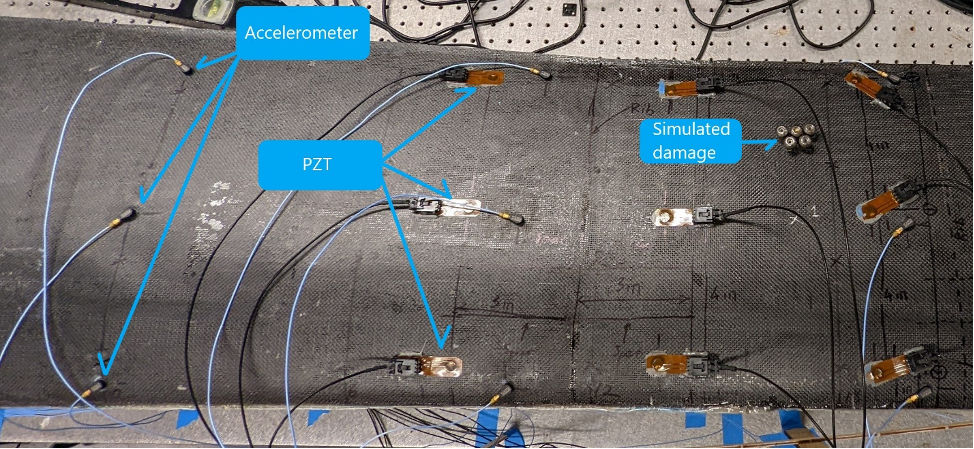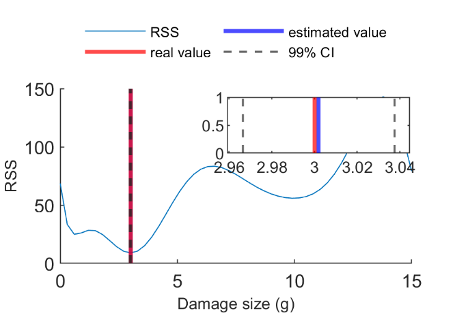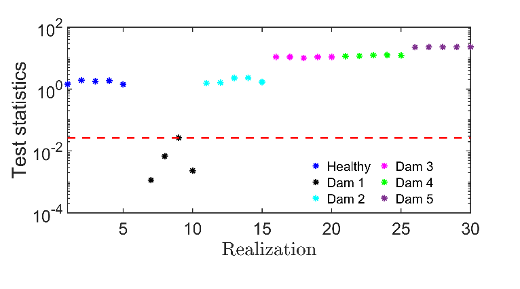Motivation & Objectives
In the arena of structural health monitoring (SHM), ultrasonic guided wave-based and vibration-based damage detection and identification methods constitute two seemingly distinct approaches, oftentimes treated separately. Guided-waves-based methods are typically used for ``local'' damage diagnosis due to their increased sensitivity while vibration-based methods are based on the premise that damage has an impact on the global structural dynamic response, therefore are typically used for tackling ``global'' damage diagnosis. The challenge is that the local approach can detect small damage that does not affect the global dynamic response, therefore the global approach might miss. But local approach doesn’t provide state awareness of global dynamic performance. Moreover, as damage propagates, the robustness of the quantification can be enhanced by combining both local and global approaches. The goal of this work is to demonstrate and assess the effectiveness and robustness of the combined local-global methods both numerically and experimentally.
Method of Approach
In this work, we present the comparison and critical assessment of two state-of-the-art time-series-based methods, a local method based on guided waves and a global based on structural vibrations, via a series of progressive damage analysis (PDA) numerical simulations and experiments on a composite unmanned aerial vehicle (UAV) wing structure. At first, a finite element model is established for progressive damage analysis on a composite plate fitted with piezoelectric sensors/actuators. Then, ultrasonic guided wave signals are generated and collected in a pitch-catch configuration as damage progression occurs while the low-frequency vibratory response and modal analysis results are also generated to allow the comparison of the local and global diagnostic methods. Next, both methods are implemented and assessed on a composite UAV wing structure, outfitted with accelerometers and piezoelectric sensors, to collect active-sensing pitch-catch ultrasonic and vibration response signals under different damage locations and magnitudes. The diagnostic methods presented are based on: (i) stochastic functional series time-varying autoregressive (FS-TAR) models to represent the ultrasonic guided wave propagation and enable the subsequent FS-TAR model-based local damage detection and identification tasks, and (ii) functionally pooled autoregressive models with exogenous excitation (FP-ARX) models to enable the global vibration-based global damage diagnosis. It is shown that by incorporating a local guided wave-based damage diagnosis scheme within the global vibration-based damage detection and identification framework, both the sensitivity and robustness for detecting and identifying (localizing and quantifying) minor damage can be significantly increased.
Indicative Results


